Mainie Jellett (1897-1944) Composition XIII Oil on canvas, 39 x 49cm (15¼ x 19¼'') Numbered "XIII" verso In the 1920s Mainie Jellett collaborated with the French painter Albert Gleizes in the development of a new type of non-objective art. Having studied Cubism with Andre Lhote in Paris in 1921, she worked in the studio of Gleizes, an important theorist of abstract art. Gleizes combined Cubism and non-objective art in the method, Translation-Rotation. The artist begins with the basic shape and two dimensional surface of the canvas and selects colours and shapes which echo it. This is translation, the static aspect. To introduce the element of time and to suggest movement, the forms are rotated in a manner inspired by Cubism. Jellett exhibited her first Translation-Rotation paintings in Dublin in 1923 when they were met with much ridicule. They were the first non-objective paintings exhibited in Ireland. Composition XIII dates to the years 1925 to 29, a period in which she continued to experiment with the method. She introduced many colours and multiple elements into the paintings as can be seen in this work. A series of interlocking shapes are built up on the surface of the canvas, moving from large rectangular forms that echo the shape of the ground, to smaller more complex shapes. The climax of the composition is the connection between the four elements on the left-hand side. A pale yellow circle or disc is surrounded and interlocked by three larger more rectilinear shapes. These also contain curved as well as angular lines and therefore reflect a wider correlation of forms in the painting. An immediate association with the interlacing forms of Celtic art is evident in the work. Jellett compared the work of the Cubist artist to that of the Celtic artist in that both were concerned with abstract art and both rejected realism and materialism. She regarded both as fundamentally concerned with spiritualism and with conveying universal ideas rather than superficial detail. The stippled areas of paint add to the dynamism of the composition. For Jellett and other pioneers of non-objective art these represented vibrations or imperceptible movements in nature and the cosmos that united matter on a metaphysical level. The painting is dominated by various tones of blue, conventionally considered to be a spiritual colour. While the blue tonality conveys solemnity, it is relieved by the warmth of the orange, red and yellow passages. This remarkable painting was made shortly before Jellett began to introduce more recognisable forms into her paintings at the end of the twenties. Subsequently her work became more outwardly religious. Composition XIII is uncompromising. It is an exercise in the language of abstract art at its most pure, a complex and rewarding example of non-objective art. Dr Roisin Kennedy, November 2015. Mainie Jellett (1897-1944) Composition XIII Oil on canvas, 39 x 49cm (15¼ x 19¼'') Numbered "XIII" verso In the 1920s Mainie Jellett collaborated with the French painter Albert Gleizes in the development of a new type of non-objective art. Having studied Cubism with Andre Lhote in Paris in 1921, she worked in the studio of Gleizes, an important theorist of abstract art. Gleizes combined Cubism and non-objective art in the method, Translation-Rotation. The artist begins with the basic shape and two dimensional surface of the canvas and selects colours and shapes which echo it. This is translation, the static aspect. To introduce the element of time and to suggest movement, the forms are rotated in a manner inspired by Cubism. Jellett exhibited her first Translation-Rotation paintings in Dublin in 1923 when they were met with much ridicule. They were the first non-objective paintings exhibited in Ireland. Composition XIII dates to the years 1925 to 29, a period in which she continued to experiment with the method. She introduced many colours and multiple elements into the paintings as can be seen in this work. A series of
Mainie Jellett (1897-1944) Composition XIII Oil on canvas, 39 x 49cm (15¼ x 19¼'') Numbered "XIII" verso In the 1920s Mainie Jellett collaborated with the French painter Albert Gleizes in the development of a new type of non-objective art. Having studied Cubism with Andre Lhote in Paris in 1921, she worked in the studio of Gleizes, an important theorist of abstract art. Gleizes combined Cubism and non-objective art in the method, Translation-Rotation. The artist begins with the basic shape and two dimensional surface of the canvas and selects colours and shapes which echo it. This is translation, the static aspect. To introduce the element of time and to suggest movement, the forms are rotated in a manner inspired by Cubism. Jellett exhibited her first Translation-Rotation paintings in Dublin in 1923 when they were met with much ridicule. They were the first non-objective paintings exhibited in Ireland. Composition XIII dates to the years 1925 to 29, a period in which she continued to experiment with the method. She introduced many colours and multiple elements into the paintings as can be seen in this work. A series of interlocking shapes are built up on the surface of the canvas, moving from large rectangular forms that echo the shape of the ground, to smaller more complex shapes. The climax of the composition is the connection between the four elements on the left-hand side. A pale yellow circle or disc is surrounded and interlocked by three larger more rectilinear shapes. These also contain curved as well as angular lines and therefore reflect a wider correlation of forms in the painting. An immediate association with the interlacing forms of Celtic art is evident in the work. Jellett compared the work of the Cubist artist to that of the Celtic artist in that both were concerned with abstract art and both rejected realism and materialism. She regarded both as fundamentally concerned with spiritualism and with conveying universal ideas rather than superficial detail. The stippled areas of paint add to the dynamism of the composition. For Jellett and other pioneers of non-objective art these represented vibrations or imperceptible movements in nature and the cosmos that united matter on a metaphysical level. The painting is dominated by various tones of blue, conventionally considered to be a spiritual colour. While the blue tonality conveys solemnity, it is relieved by the warmth of the orange, red and yellow passages. This remarkable painting was made shortly before Jellett began to introduce more recognisable forms into her paintings at the end of the twenties. Subsequently her work became more outwardly religious. Composition XIII is uncompromising. It is an exercise in the language of abstract art at its most pure, a complex and rewarding example of non-objective art. Dr Roisin Kennedy, November 2015. Mainie Jellett (1897-1944) Composition XIII Oil on canvas, 39 x 49cm (15¼ x 19¼'') Numbered "XIII" verso In the 1920s Mainie Jellett collaborated with the French painter Albert Gleizes in the development of a new type of non-objective art. Having studied Cubism with Andre Lhote in Paris in 1921, she worked in the studio of Gleizes, an important theorist of abstract art. Gleizes combined Cubism and non-objective art in the method, Translation-Rotation. The artist begins with the basic shape and two dimensional surface of the canvas and selects colours and shapes which echo it. This is translation, the static aspect. To introduce the element of time and to suggest movement, the forms are rotated in a manner inspired by Cubism. Jellett exhibited her first Translation-Rotation paintings in Dublin in 1923 when they were met with much ridicule. They were the first non-objective paintings exhibited in Ireland. Composition XIII dates to the years 1925 to 29, a period in which she continued to experiment with the method. She introduced many colours and multiple elements into the paintings as can be seen in this work. A series of
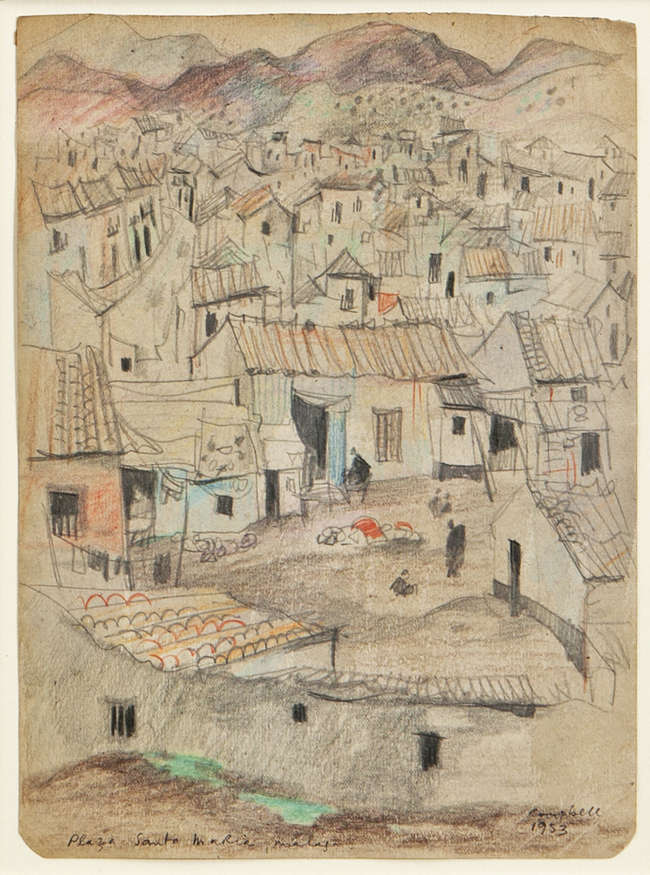
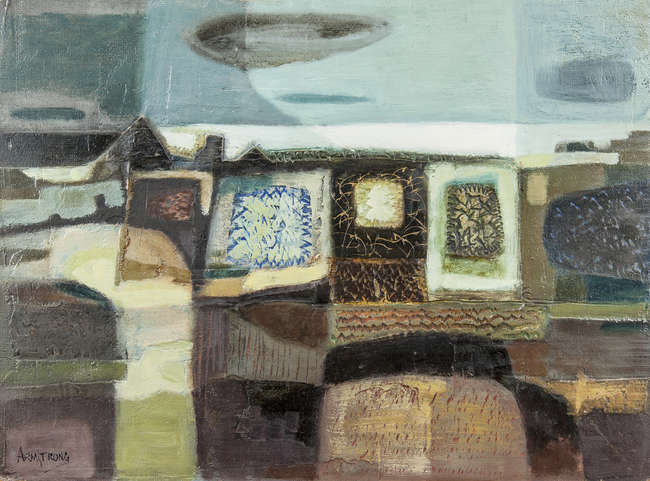
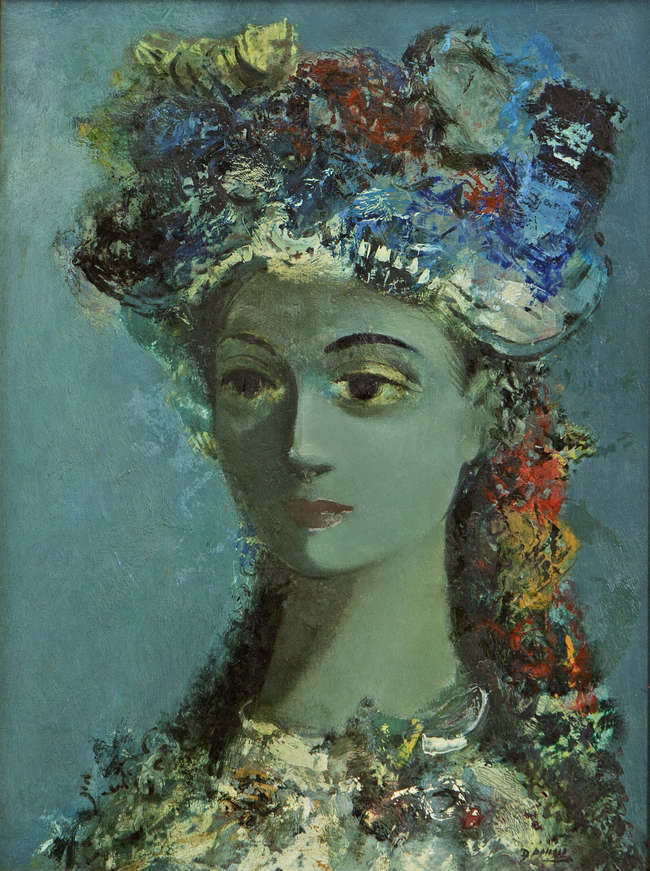
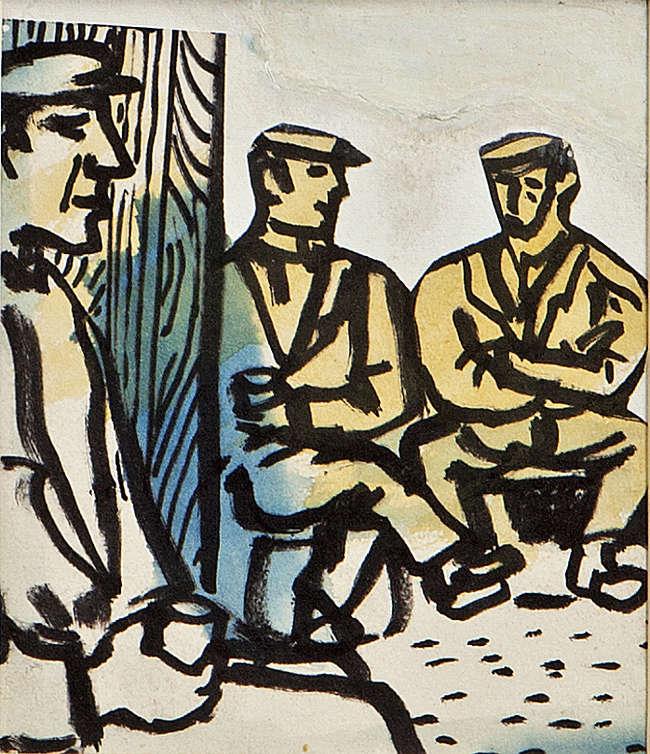
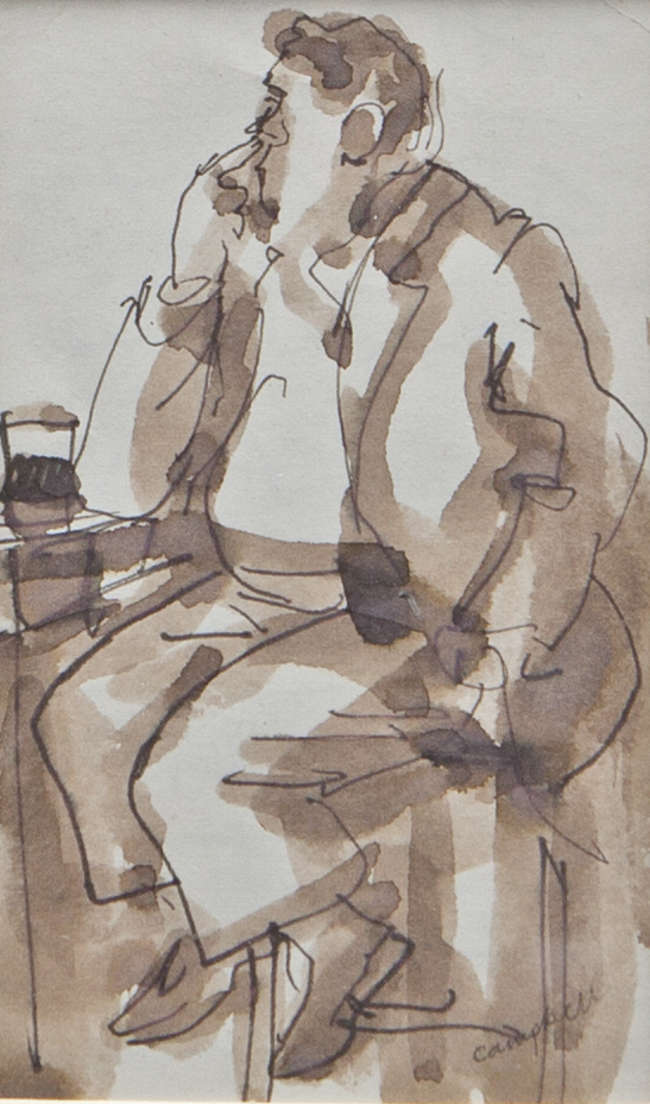
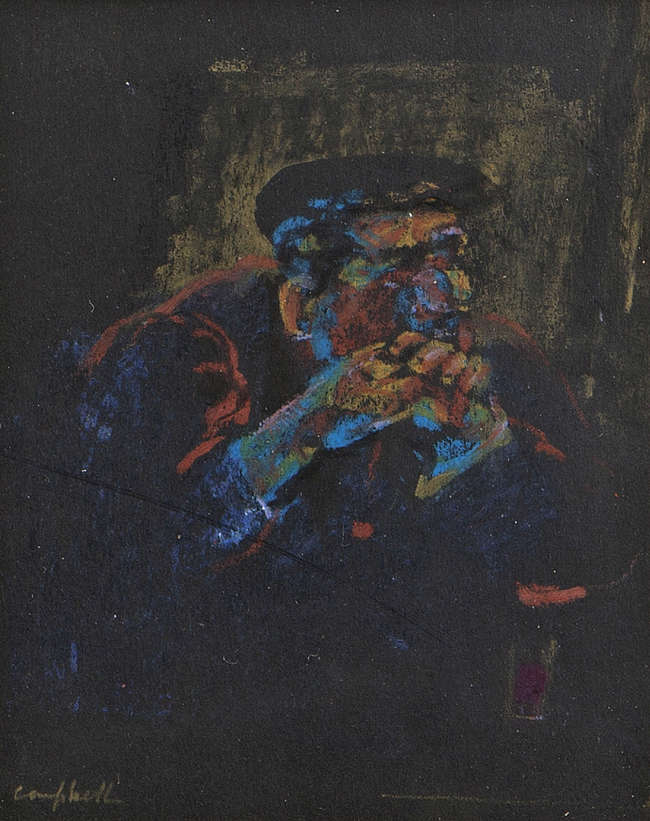
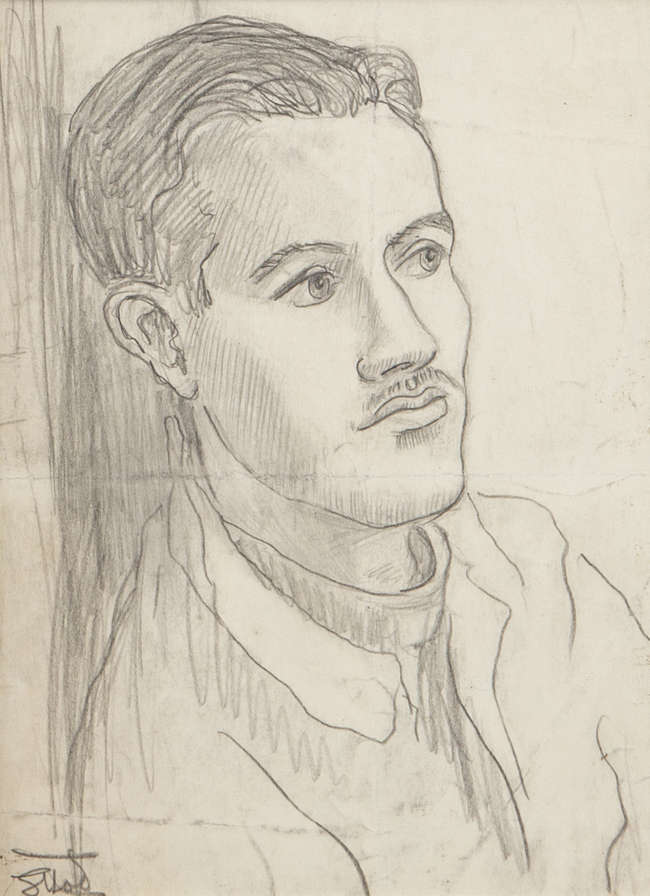
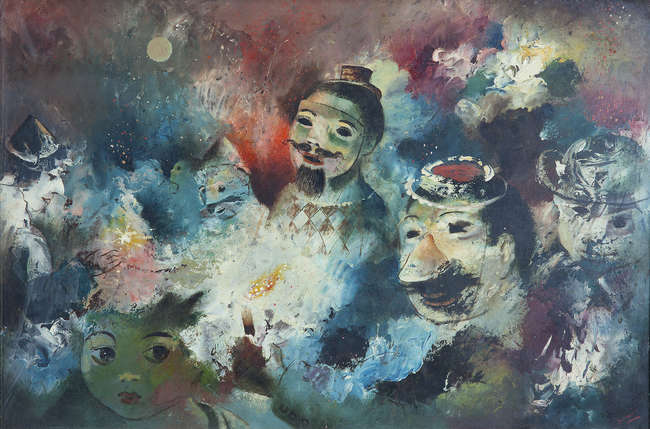
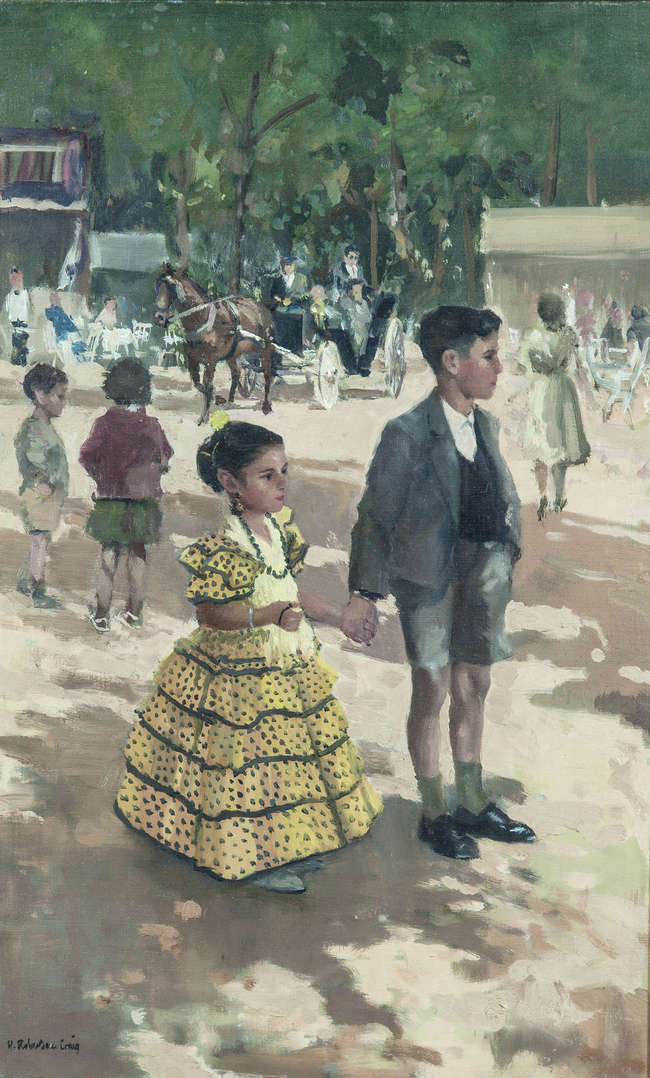
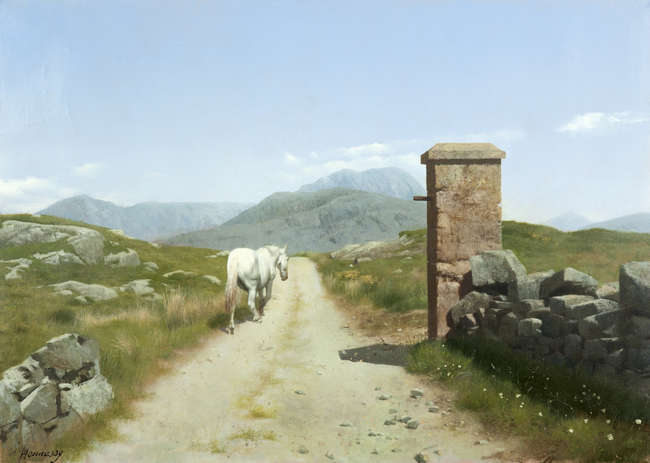
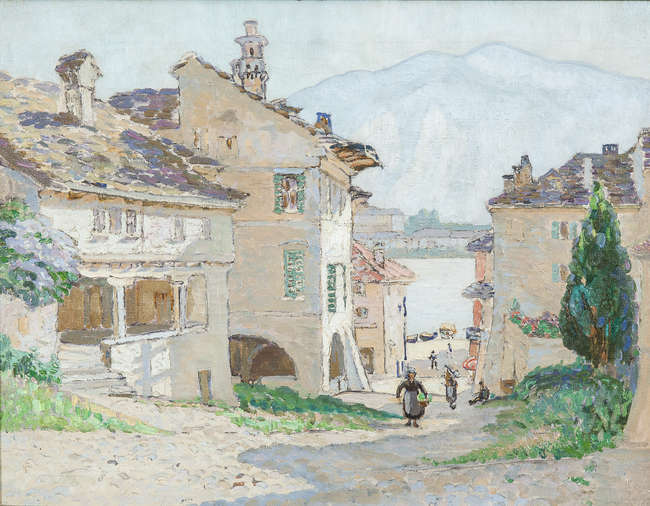
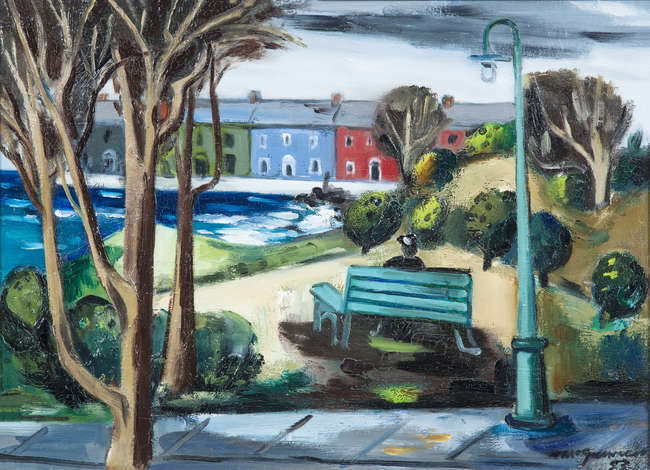


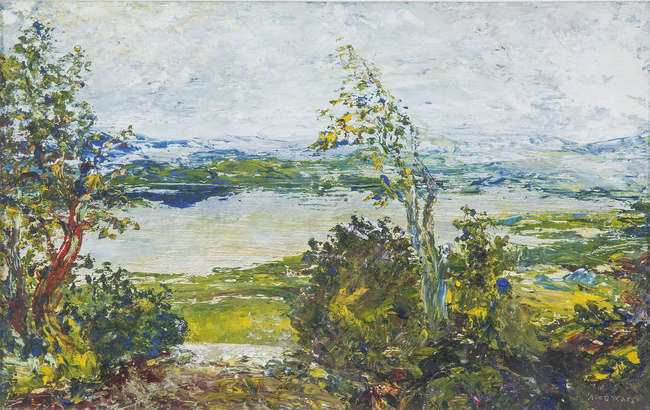
Testen Sie LotSearch und seine Premium-Features 7 Tage - ohne Kosten!
Lassen Sie sich automatisch über neue Objekte in kommenden Auktionen benachrichtigen.
Suchauftrag anlegen